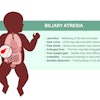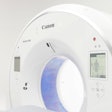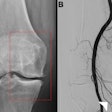Men with enlarged prostates who undergo minimally invasive prostatic artery embolization (PAE) have significant improvements in symptoms after two years, according to a study published on 4 September in Cardiovascular and Interventional Radiology.
The finding is from a large clinical trial across 14 international centers and ultimately supports the durability of the benefits of the procedure, noted lead author Prof. Marc Sapoval, PhD, of Hôpital Européen Georges-Pompidou in Paris, and colleagues.
“Additionally, the low rates of [adverse events] and serious [adverse events] observed during the follow-up period suggest that PAE is a safe option to address the clinical needs of this patient population,” the authors wrote.
Surgery to remove tissue is standard therapy in men with benign prostatic hyperplasia (BPH), or enlarged prostate, yet is associated with complications, such as bleeding, incontinence, and sexual dysfunction, they explained.
While prior studies have highlighted the safety and effectiveness of PAE over standard surgery to remove tissue, additional real-world, long-term evidence describing clinical outcomes following the procedure may encourage its broader use, they added.
To that end, the researchers enrolled 478 consecutive patients for PAE procedures. Of these, 405 individuals (84.7%) had bothersome lower urinary tract symptoms (LUTS) and 73 (15.3%) had acute urinary retention (AUR) that required indwelling catheters to manage bladder control issues.
For the patients treated for bothersome LUTS, scores that measured the severity of symptoms such as urgency, frequency, incomplete emptying, and voiding problems – improved from 21.8 at baseline to 9.3 at three months, 10.6 at one year, and 11.2 at two years, according to the results.
In addition, a total of 65.8% (48/73) of patients with AUR were able to have their indwelling catheter removed within three months of the procedure and remained catheter-free for the remainder of the two-year follow-up period.
Fifty-five patients (11.5%) experienced one adverse event or more and 10 (2.1%) experienced a serious adverse event, the researchers noted.
“Findings from this multicenter, international, prospective, cohort study of patients with BPH and bothersome LUTS, or AUR, who underwent PAE provide further evidence supporting the clinical utility of PAE,” they wrote.
Ultimately, the clinical benefits and tolerable safety profile associated with PAE have been recognized by the Society for Interventional Radiology (SIR) and the American Urological Association (AUA), the authors noted.
A limitation of this study was not including a control cohort so that the magnitude of improvements for patients undergoing PAE could not be compared with untreated patients, they added.
“Nevertheless, the proportion of patients in both cohorts that experienced technical success of the procedure was high and aligns with prior evidence demonstrating the technical feasibility of the procedure,” the researchers concluded.
The full study is available here.



















